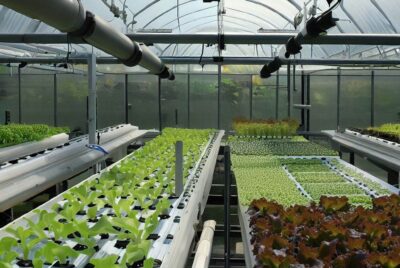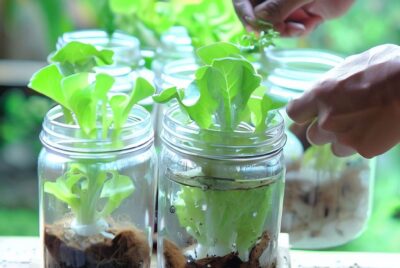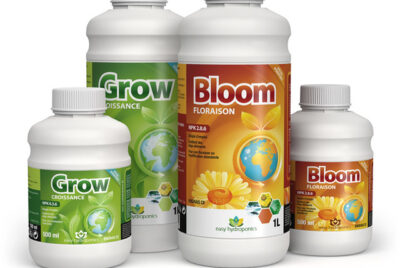Hydroponic DIY: A Step-by-Step Guide
*We may earn a commission for purchases made using our links. Please see our disclosure to learn more.
I’m thrilled to guide you through the process of setting up your very own hydroponic DIY system. In this article, we’ll delve into the world of hydroponics and explore the benefits of building your system from scratch. Whether you’re a seasoned gardener or a beginner, hydroponic DIY offers an exciting and rewarding way to grow your own fresh and healthy produce right at home. So, let’s roll up our sleeves and embark on this hydroponic DIY journey together!
Hydroponic DIY: Introduction
Hydroponics, a soil-less method of gardening, has gained popularity due to its efficiency, sustainability, and ability to produce bountiful harvests. By providing plants with a nutrient-rich water solution, hydroponic systems allow for faster growth and higher yields compared to traditional soil-based cultivation. While pre-made hydroponic systems are readily available, building your hydroponic DIY system opens up a world of customization and flexibility. Let’s explore the benefits and steps involved in creating your hydroponic DIY masterpiece.
Understanding Hydroponics
Before diving into the process of building a hydroponic DIY system, it’s essential to understand the basics of hydroponics. In hydroponics, plants are grown in a controlled environment without soil, using various techniques to deliver water, nutrients, and oxygen directly to the plant roots. This method eliminates the need for soil and allows plants to focus their energy on growth and fruit production.
Benefits of Hydroponic DIY
Building your hydroponic system has several advantages. First and foremost, it offers cost savings compared to purchasing a pre-made system. By sourcing the materials yourself and tailoring the system to your needs, you can achieve a more budget-friendly setup. Additionally, hydroponic DIY allows for customization, enabling you to design a system that suits your available space, growing preferences, and crop selection. Furthermore, the satisfaction of building and nurturing your hydroponic garden from scratch is immeasurable.
Choosing the Right System
When venturing into hydroponic DIY, it’s crucial to select the right system that aligns with your goals and resources. Several hydroponic techniques are suitable for DIY setups, including deep water culture (DWC), nutrient film technique (NFT), and ebb and flow (flood and drain). Each method has its pros and cons, so consider factors such as space, complexity, water usage, and maintenance requirements before making a decision.
Setting Up Your Hydroponic DIY System
1. Designing the System
Before diving into construction, take time to plan and design your hydroponic DIY system. Consider factors such as available space, desired plant capacity, and ease of maintenance. Sketch out your system on paper or use digital design tools to visualize the layout and arrangement of components.
2. Gathering Materials
Once you have a design in mind, it’s time to gather the necessary materials. The key components typically include containers for holding the nutrient solution, a pump to circulate the solution, a growing medium, an air pump for oxygenation, and appropriate plumbing and fittings. High-quality materials are essential for long-term durability and success.
3. Construction and Assembly
With all the materials at hand, it’s time to roll up your sleeves and start building your hydroponic DIY system. Follow your design plan and assemble the different components, ensuring a secure and leak-free setup. Take care to position the containers, plumbing, and pumps correctly, as they play crucial roles in nutrient delivery and oxygenation.
4. Installation and Testing
Once the system is assembled, install it in the desired location, ensuring proper stability and access to necessary utilities. Before introducing plants, it’s crucial to test the system’s functionality and address any leaks or malfunctions. Fill the containers with the nutrient solution, turn on the pump, and check for proper circulation and oxygenation.
Selecting the Growing Medium
The choice of growing medium is a vital aspect of hydroponic DIY. The growing medium provides support to the plant roots while allowing proper water and nutrient uptake. Common options include perlite, vermiculite, coconut coir, rockwool, and clay pellets. Consider factors such as water retention, aeration, pH neutrality, and reusability when selecting the most suitable growing medium for your hydroponic DIY system.
Nutrient Solution and pH Management
In hydroponics, plants receive nutrients through a nutrient solution. This solution contains all the essential elements required for plant growth and development. It’s crucial to monitor and maintain the nutrient solution’s composition, ensuring the right balance of macro and micronutrients. Regularly measure the pH level of the solution using a pH meter or test kit, aiming for an optimal pH range that promotes nutrient availability and absorption.
Lighting and Environmental Considerations
Proper lighting is vital for the success of your hydroponic DIY system. Depending on the plant species you intend to grow, choose the appropriate grow lights. LED grow lights are energy-efficient and provide a wide light spectrum suitable for different growth stages. Consider factors such as light intensity, duration, and distance from the plants to ensure optimal photosynthesis and plant growth.
Plant Selection and Care
One of the joys of hydroponics is the wide range of plants you can grow. From leafy greens and herbs to tomatoes and peppers, the possibilities are endless. Research the specific requirements of your chosen plants, including temperature, humidity, and nutrient needs. Regularly monitor plant health, pruning and trellising when necessary, and providing adequate ventilation to prevent pest and disease issues.
Monitoring and Maintenance
Maintaining a healthy hydroponic DIY system requires regular monitoring and maintenance. Check the nutrient solution’s pH and nutrient levels regularly, adjusting as needed. Monitor water levels, ensuring adequate oxygenation and preventing water stagnation. Clean and maintain the system components, replacing any worn-out parts. Regularly inspect plants for signs of nutrient deficiencies, pests, or diseases, taking appropriate action promptly.
Troubleshooting Common Issues
Despite your best efforts, occasional challenges may arise in your hydroponic DIY journey. Common issues include nutrient imbalances, pH fluctuations, algae growth, and pest infestations. Educate yourself on common problems and their solutions, seeking advice from fellow hydroponic enthusiasts or online communities. Address issues promptly to ensure the health and productivity of your plants.
Scaling Up Your Hydroponic DIY Operation
Once you’ve mastered the art of hydroponic DIY on a small scale, you may consider scaling up your operation. Expand your system, experiment with different crops, and explore advanced techniques such as vertical farming or aquaponics. Scaling up allows you to maximize your harvests and delve deeper into the world of soil-less gardening.
Harvesting and Enjoying the Fruits of Your Labor
The ultimate reward of hydroponic DIY is harvesting and enjoying the fresh, nutritious produce you’ve grown. Harvest plants when they reach their peak ripeness, following proper techniques to ensure optimal flavor and quality. Share your bountiful harvests with friends and family, savoring the taste of your successful hydroponic DIY venture.
Conclusion
Embarking on a DIY journey opens up a world of possibilities for growing your own fresh produce at home. From designing and building your system to nurturing plants and troubleshooting challenges, the process is both rewarding and educational. By following this step-by-step guide, you can create a thriving DIY system that brings you joy and abundant harvests throughout the year. So, grab your tools and start your hydroponic DIY adventure today!
FAQs
- Can I use any container for my hydroponic DIY system?
- While you have some flexibility, it’s essential to choose containers that are food-safe, durable, and suitable for holding the nutrient solution.
- Do I need to use artificial lighting for my hydroponic DIY system?
- In most cases, yes. Adequate lighting is crucial for plant growth in indoor hydroponic systems. LED grow lights are a popular and efficient choice.
- How often should I check and adjust the nutrient solution’s pH?
- It’s recommended to monitor and adjust the pH of the nutrient solution at least once a week, or as needed, to maintain optimal nutrient availability.
- Can I grow fruiting crops like tomatoes in a hydroponic DIY system?
- Absolutely! Hydroponics is well-suited for growing a wide range of fruiting crops, including tomatoes, peppers, cucumbers, and strawberries.
- How long does it take for plants to grow in a hydroponic DIY system?
- The growth rate varies depending on the plant species, environmental conditions, and nutrient availability. Generally, plants tend to grow faster in hydroponics compared to soil-based cultivation.
Remember, hydroponic DIY is an exciting and ever-evolving journey. Embrace the learning process, experiment with different techniques, and enjoy the rewards of growing your own fresh and nutritious produce right at home. Happy gardening!




